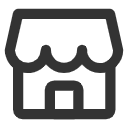- Attractions in Eritrea
- Language
- Tigrinya and Arabic are the most widely spoken languages, with Tigrinya being the de facto national language and Arabic holding a recognized status. Other languages such as Saho, Bilen, Tigre, and Afar are also spoken by various ethnic groups. As for foreign languages, English and Italian are commonly understood and spoken, mainly due to historical ties.
- Best time to visit
- Eritrea, located in the Horn of Africa, experiences a warm climate throughout the year. However, the best time to visit is during the cooler months from October to March. During this period, temperatures are relatively mild, making it an ideal time to explore the country's diverse landscapes, ranging from the stunning Red Sea coast to the highlands and the deserts. It's also a good time to witness Eritrea's rich cultural heritage, including its Italian colonial architecture and traditional festivities. Be aware that the rainy season typically occurs from June to September, which can make certain regions less accessible.
- Festivals
- Date: MayFestival name: Independence DayEritrea's most significant national holiday celebrates the country's independence from Ethiopia in 1991. Festivities include parades, cultural performances, speeches, and various public and private events throughout the country.
- Date: JuneFestival name: Martyrs' DayThis solemn occasion commemorates the tens of thousands of Eritreans who lost their lives during the 30-year struggle for independence. The day is marked by candlelit vigils, prayers, and moments of silence.
- Local cuisine
- Zigni
- Zigni is Eritrea's most famous dish, often served as a stew. It's typically made with beef, tomatoes, berbere spice mix, onions, and garlic, slowly simmered to perfection.
- Injera
- A staple in Eritrean cuisine, Injera is a sourdough flatbread made from fermented teff flour. It's often served as a base for stews and salads.
- Shiro
- This is a popular dish made from powdered chickpeas or broad bean meal. It's combined with spices, onions, and tomatoes and served with Injera or bread.
- Ful Medames
- A common breakfast meal, Ful Medames is made from fava beans cooked with onions, tomatoes, and spices, served with bread or Injera.
- Tsebhi Dorho
- This is a spicy chicken stew prepared with berbere spice, onions, tomatoes, and served with Injera.
- Suwa
- Eritrea's traditional alcoholic beverage, Suwa, is made from fermented barley and gesho, a local plant used for brewing.
- Asmara Beer
- Named after the capital city, Asmara Beer is a locally brewed lager and a popular choice among Eritreans.
- Eritrean Coffee
- Eritrea is well known for its coffee, which is typically prepared in a traditional coffee ceremony, using locally grown coffee beans, sugar, and sometimes spices.
- Packing
When packing for Eritrea, it's important to consider the country's climate, which varies from hot and arid in the coastal regions to a cooler, wetter climate in the highlands. Lightweight, breathable clothing is essential for the heat, but don't forget a warmer layer or two for the cooler evenings and highland regions. A raincoat or umbrella would be useful if you're visiting during the rainy season. Comfortable walking shoes are a must, as you'll likely be exploring on foot. Sun protection, including a hat, sunglasses, and sunscreen, is also crucial due to the strong sun. As a conservative country, modest clothing is recommended, especially for women.
- Currency
The official currency of Eritrea is the Nakfa (ERN), available in various denominations in both coins and banknotes. Eritrea primarily operates on a cash-based economy, with limited acceptance of credit cards and traveler's checks. ATMs are not common, and those present may not accept foreign cards. Visitors are advised to carry sufficient cash, preferably in Nakfa, as it is illegal to exchange currency outside authorized dealers. US Dollars and Euros may be accepted in some tourist-focused businesses.
- Transport
Eritrea's primary international gateway is the Asmara International Airport, located in the capital city, Asmara. The country's transportation infrastructure consists of buses, taxis, and trains. Buses are the most common form of public transportation, connecting major cities and towns. Taxis are also available in urban areas, but they might not run on meters, so it's advisable to negotiate fares beforehand. Eritrea also has a unique historical railway system, the Eritrean Railway, which is popular with tourists but has limited functionality for regular commuting. For intercity travel, car rental services are available, but roads can be rough outside urban areas, and driving standards may be different from what visitors are used to. Given the limited public transportation and challenging road conditions, hiring a local driver or joining a guided tour can be a safer and more convenient option.
- Emergency
Eritrea, a nation rich in culture, values modesty in dress, especially at religious sites, and politeness in behavior, with eating with the left hand, direct pointing, and touching someone's head seen as impolite. Public displays of affection are generally not accepted due to the conservative nature of society. The emergency number is 2911, but services may be slow, particularly outside Asmara.
- Power socket
Eritrea operates on a 230V supply voltage and 50Hz. The country primarily uses Type C and Type L power sockets.
- Top Eritrea tour operators
Happy Explore Safari *
3 ReviewsOffer Tours InKenya 2 ToursVerified



